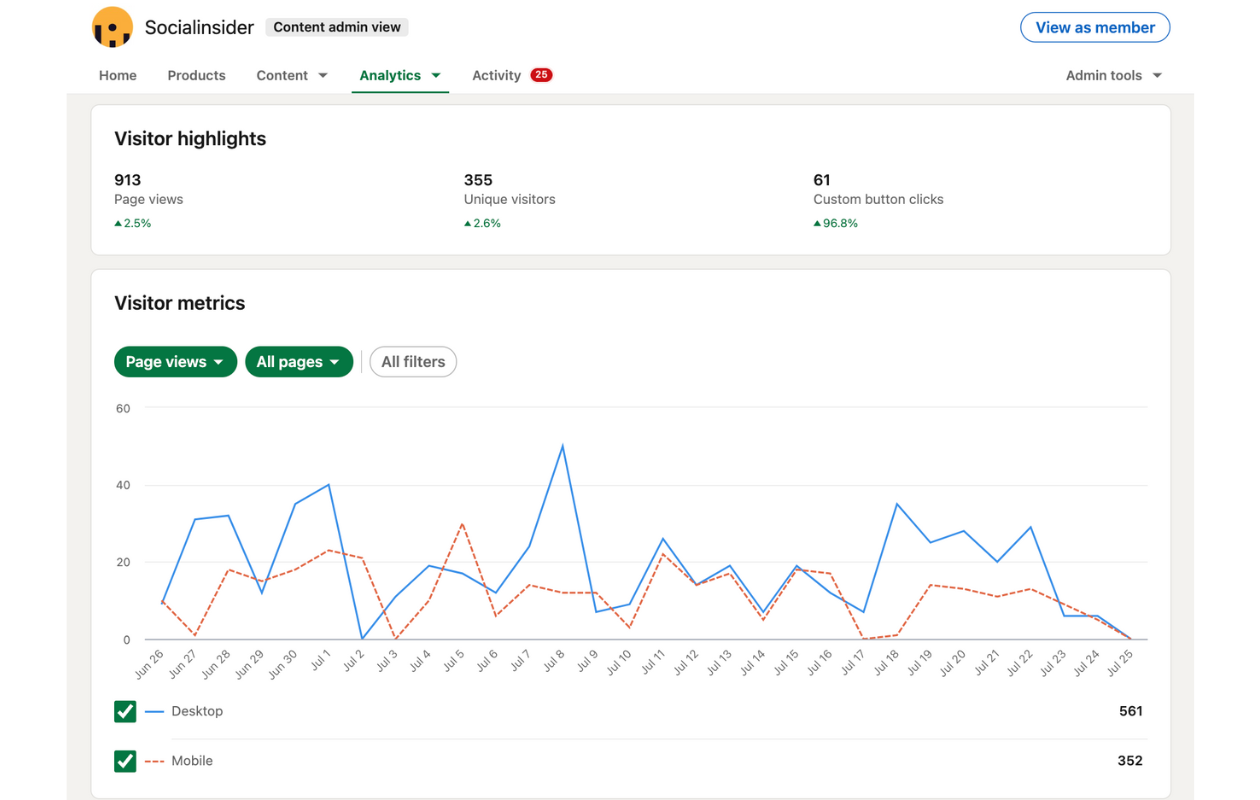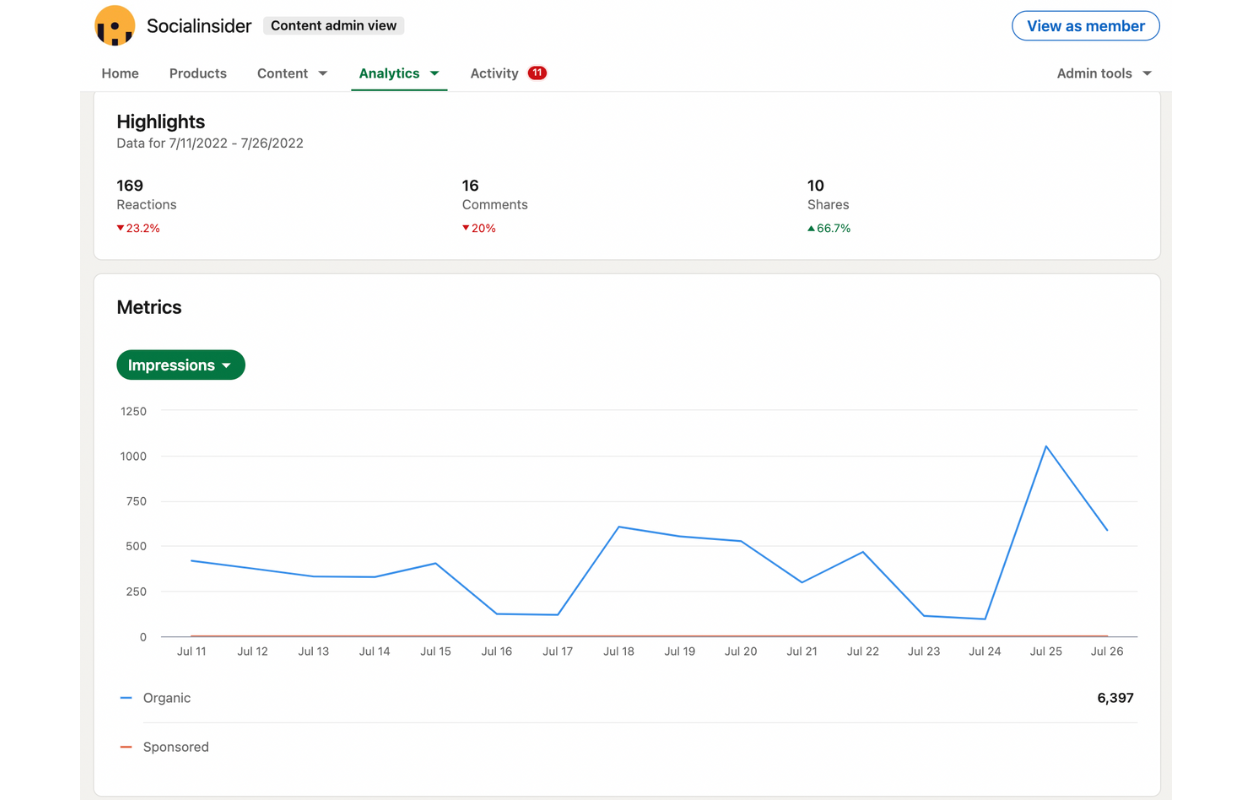In today’s digital landscape, understanding how your content performs on platforms like LinkedIn can be a game-changer for professionals and businesses alike. One of the key metrics you’ll encounter is “impressions.” But what exactly is an impression? And why should you care? In this blog post, we will dive into the concept of impressions on LinkedIn, helping you grasp their significance and how they fit into the larger picture of your engagement strategy. If you want to amplify your presence on
What Are Impressions on LinkedIn?

Impressions on LinkedIn refer to the number of times your content—be it a post, article, or update—in a user's feed is displayed. A single impression is counted each time your content appears on someone’s screen, regardless of whether they engage with it or not. This could be in someone’s feed, on their connections page, or in a group where you’ve shared your content.
Key Points about Impressions:
- Non-Engagement Metric: Impressions do not equate to engagement; they simply represent visibility.
- Unique Impressions vs. Total Impressions: Unique impressions count how many individual users saw your content, while total impressions consider all views, including repeats by the same user.
- Influence on Algorithm: Higher impressions can signal the LinkedIn algorithm to show your content to even more users.
Understanding impressions is crucial because they lay the groundwork for other metrics such as clicks, likes, and shares. By closely monitoring impressions, you can assess how much visibility your content is getting and identify what types of updates resonate most with your audience. This insight allows you to tweak your strategy and ultimately achieve greater engagement and reach.
Factors Influencing Impressions

When it comes to measuring impressions on LinkedIn, several factors come into play. Understanding these factors can give you insight into how to enhance your visibility on the platform.
- Content Quality: High-quality, engaging content is sure to catch the attention of your audience. Posts that are informative or offer value tend to generate higher impressions.
- Posting Time: Timing is everything! Posting when your audience is most active can significantly affect the number of impressions. Early mornings or lunchtime usually work well.
- Frequency of Posting: Regular posting can keep your network engaged. However, find the right balance; too much can overwhelm your audience, while too little can lead to decreased visibility.
- Use of Hashtags: Including relevant hashtags can significantly boost the reach of your posts. They help categorize your content and make it discoverable to a wider audience.
- Engagement Metrics: Posts that receive likes, comments, and shares tend to garner higher impressions. Engaging with your audience encourages them to interact with your content, increasing overall visibility.
- Network Size: Your network's health shapes your impressions too. A larger, engaged network can amplify your impressions due to more people seeing your posts in their feed.
By focusing on these factors, you can optimize your content strategy and boost your impressions on LinkedIn.
How Many Impressions Are Considered Good?

So, you've started to post on LinkedIn, and you're probably wondering, "How many impressions are actually considered good?" The answer isn't entirely black and white, as it can vary widely based on your industry, audience, and even your personal goals.
Here’s a simple breakdown to give you a clearer picture:
| Type of Profile | Average Impressions | Good Impressions |
|---|---|---|
| Personal Profile (Individual) | 100 - 300 Impressions | 500+ Impressions |
| Business Page | 200 - 500 Impressions | 1,000+ Impressions |
| Industry Leaders/Influencers | 500 - 1,000 Impressions | 2,000+ Impressions |
As a general guideline, consider anything above the average range as a solid performance. However, keep in mind that quality trumps quantity. It’s not just about getting more impressions, but also how well those impressions convert into meaningful engagement.
The key takeaway? Monitor your progress, aim for consistent growth, and adjust your strategy as you learn more about your audience's preferences! Ultimately, good impressions are those that help you achieve your personal or professional objectives.
Additional Metrics to Track on LinkedIn
When it comes to making the most of your LinkedIn presence, it's crucial to look beyond just impressions. While impressions give you a good starting point for understanding content visibility, several other metrics can provide deeper insights into your performance and audience engagement. Here are some additional key metrics to keep an eye on:
- Engagement Rate: This is one of the most important metrics, as it shows how your audience interacts with your content. It includes likes, comments, and shares relative to the impressions. A high engagement rate often suggests your content resonates well.
- Click-Through Rate (CTR): CTR measures the percentage of people who click on your links compared to the number of people who saw your post. It’s an excellent indicator of how compelling your calls-to-action are.
- Follower Growth: Monitoring how your follower count increases over time can indicate your brand's growing influence and reach on LinkedIn. A steady rise may suggest successful content strategies.
- Profile Views: Keep track of how many times your profile has been viewed. Higher profile views may lead to new connections or job opportunities, revealing increased interest in your professional background.
- Conversions: If you're using LinkedIn for lead generation or business inquiries, it’s vital to track how many of those impressions lead to concrete actions, like signing up for a newsletter or requesting a quote.
By regularly monitoring these additional metrics alongside your impressions, you can create a clearer picture of what's working and what needs adjustment in your LinkedIn strategy.
Strategies to Increase Impressions
Boosting your impressions on LinkedIn isn't just about posting more often; it’s about creating effective strategies that resonate with your audience. Here are some tried-and-true methods to help you increase your visibility on the platform:
- Optimize Your Profile: Make sure your profile is complete and polished. Use a professional photo, a compelling headline, and an engaging summary. The more attractive your profile is, the more likely people are to interact with your content.
- Post Regularly: Consistency is key! Regular posting keeps your profile active and ensures that your content pops up in your connections' feeds. Aim for at least a few posts per week.
- Use Hashtags Wisely: Incorporating relevant hashtags can help your posts reach a wider audience beyond your direct connections. Stick to 3-5 well-chosen hashtags related to your content.
- Engage with Others: Commenting on and sharing others’ posts can help you get noticed. When you engage with your network, they’re more likely to return the favor and engage with your content.
- Utilize Multimedia Content: Posts with images, videos, or infographics often perform better than text-only posts. Invest some time in creating appealing visuals to capture attention and increase shares.
By integrating these strategies into your LinkedIn routine, you can significantly boost your impressions and enhance your overall engagement on the platform.
Understanding Impressions on LinkedIn and Key Metrics to Monitor
In the world of digital marketing, understanding the metrics behind your content is crucial for achieving success. On LinkedIn, impressions are a fundamental metric that marketers and professionals must grasp. Impressions represent the number of times your content is displayed on a user's screen, regardless of whether it was clicked or interacted with. This metric is essential for assessing the reach of your content.
Here are some key aspects of impressions on LinkedIn:
- Definition: Impressions count each time your post, article, or advertisement appears in a feed.
- Types of Impressions: LinkedIn distinguishes between organic and paid impressions. Organic impressions come from your network and followers, while paid impressions come from your advertising campaigns.
Understanding impressions is vital, but it's equally important to monitor additional key metrics for a comprehensive view of your LinkedIn performance:
| Metric | Description |
|---|---|
| Engagement Rate | The percentage of viewers who interacted with your content (likes, comments, shares). |
| Click-Through Rate (CTR) | The ratio of clicks on your content to impressions, indicating effectiveness. |
| Follower Growth | The increase in your followers over a specific period, reflecting interest in your content. |
By monitoring these metrics alongside impressions, you can gauge the true impact of your content on LinkedIn and refine your strategy accordingly.
Conclusion: Balancing impressions with engagement is key in your LinkedIn strategy; while high impressions indicate visibility, genuine engagement drives relationships and leads to conversions.










